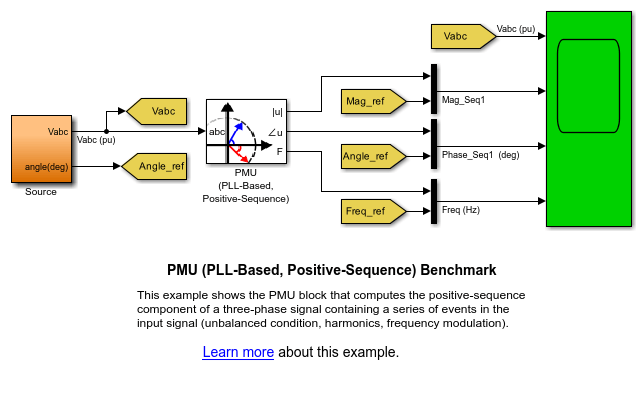PMU (PLL-based, Positive-Sequence) Benchmark
This example shows the use of a phasor measurement unit - PMU (PLL-based, Positive-Sequence) in a benchmark circuit.

Description
The PMU (PLL-Based, Positive-Sequence) benchmark model computes the positive-sequence component of a three-phase signal containing a series of events in the input signal (unbalanced condition, harmonics, frequency modulation).
It shows that the PMU (PLL-Based, Positive-Sequence) block outputs accurate magnitude, phase and frequency even if the input signal varies during the simulation.
Simulation
In Model Configuration Parameters, select "Variable-step" as simulation type and "Auto (Automatic solver selection)" as the solver.
Sequence of simulated events:
1. t = 0: Positive-sequence voltage = 1 pu, phase 0 deg
2. 0.2 s < t < 0.4 s: Positive-sequence voltage falls to 0 pu
3. t > 0.5 s: Sinusoidal frequency modulation (58/62 Hz Freq = 1 Hz)
4. 1 s < t < 1.5 s: Adding unbalanced condition (0.4 pu of negative-sequence and 0.3 pu of zero-sequence, no harmonics)
5. t = 1.75 s: Phase shift of -90 deg
6. t > 2 s: Adding harmonic condition without unbalance (20% 3rd + 30% 4th)
Change the reporting rate factor and the sampling rate. Compare the shape of the waveforms shown on the scope.
Finally, compare the reference signals (magenta) and the PMU signals (yellow) of frequency, magnitude and phase.
